We took the Tata Curvv.ev from the confines of a congested suburb and out in to the serenity of Udaipur, to find out whether the coupé-SUV can make a splash amongst an armada of established SUVs

Words: Gaurav Davare
Photography: Sanjay Raikar
When it comes to the SUV body style, it’s one a lot of people are familiar with and over recent years has been a dominant presence in the automotive space, the world over. Even in India, SUVs generally rule the roost and plenty of segments, including the mid-size SUV space, are hotly contested. Tata Motors have decided to have a proper crack at it and they’ve done it in their own trendsetting way in the form of a coupé-SUV. Called the Tata Curvv, it is a big statement from Tata Motors as it is one of only two mass-market coupé-SUVs in the country hot off the launch of the Citroen Basalt. Of course, with Tata pushing into the EV space, they’ve launched the all-electric version, the Curvv.ev before the combustion (ICE) version. Does the Curvv.ev stand out enough as a coupé-SUV to really throw a curveball to the competition? Let’s find out.
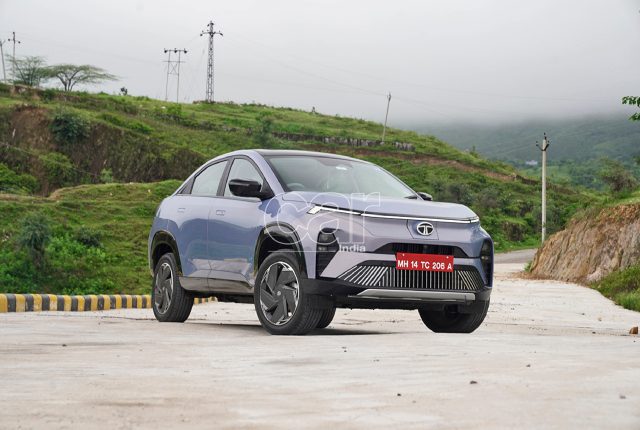
In quite an apt way the “Virtual Sunshine” body shade really makes the Tata Curvv.ev easy on the eyes with a different variation of blue around a variety of scenic lighting scenarios around Udaipur. Looking closer, it bears a striking resemblance to the Nexon.ev with that connected LED DRL strip, the minimalist grille panel and the headlight housing. While it’s not a bad thing to take such an inspiration as it does look futuristic, having a bit more individuality would’ve helped it stand out further.
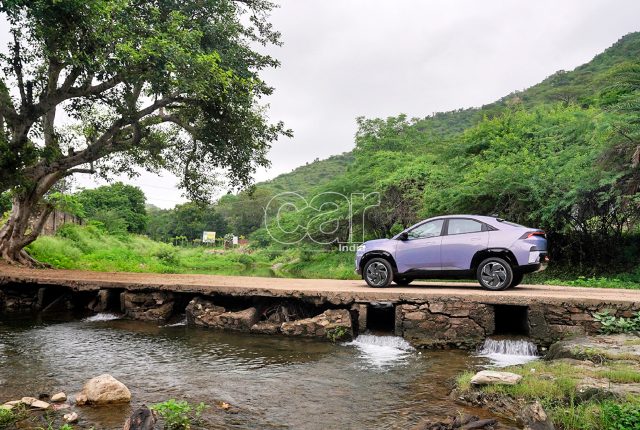
Nevertheless, it is from the side where Curvv.ev is well, curvy like its name suggests, with a soft silhouette, snazzy and aerodynamic 18-inch alloy wheels, and segment-first flush-fitting door handles that get an illuminated strip. The real talking point on the outside is what makes it a coupé SUV, a sloping roofline that has a nice gradual flow towards an upright boot lid that has a sleek rear end with a connected LED tail-light bar. It’s not entirely curvy though as the chunky wheel arches, skid-plates and split roof-mounted spoiler with a shark-fin antenna add a dash of ruggedness and sportiness to the EV. Combine all of it with a high stance and the Curvv.ev has a strong road presence.
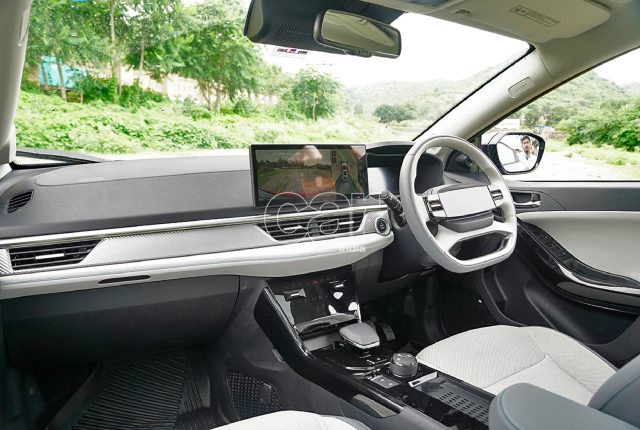
The similarities to the Nexon.ev continue inside with the dashboard layout, the 12.3-inch touchscreen infotainment system,10.25-inch digital driver display, and the touch-based centre console controls are retained which looks fairly modern although more use of soft touch materials would’ve been nice. Nevertheless, the Curvv.ev does have its stand out bits such as the ambient lighting being extended to the door pads, the steering wheel being taken from the Harrier and Safari, a design I prefer, gets a six-way powered driver’s seat as well feature a massive panoramic sunroof that really adds to the cabin’s sense of space.
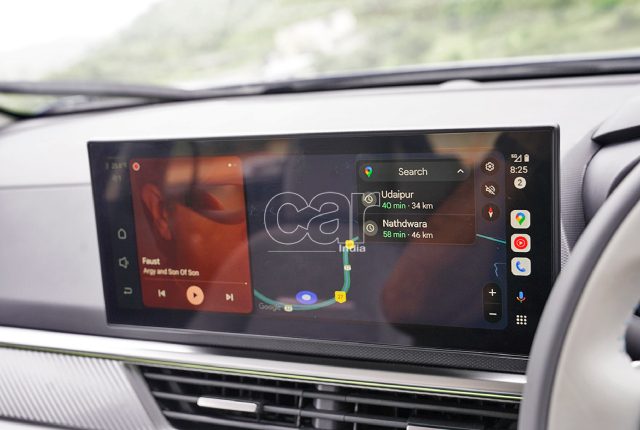
As is the case with most modern Tata models, the top-spec Empowered+A variant we’re seated has all the bells and whistles such as wireless smartphone connectivity, compatibility for up to four voice assistants, more apps for the Arcade.ev store, ventilated front seats and a nine-speaker JBL sound system. While six airbags are standard, ABS with EBD, and the electronic parking brake with auto-hold cover a good deal of passenger safety, Level 2 ADAS is the big pull. The Acoustic Vehicle Alert System is also another interesting safety feature as it emits a bespoke sound to alert pedestrians at speeds below 20 km/h. That being said, the sound could’ve been a bit louder as one can’t really hear it around noisy streets.
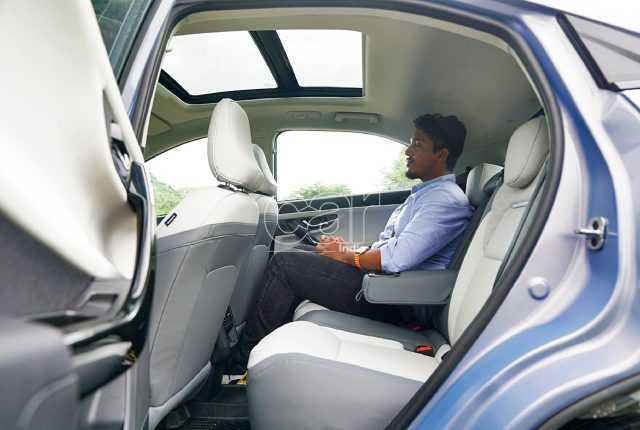
Being seated in the Curvv.ev is a nice feeling as the seats are decently bolstered. For the rear occupants though, does a coupé-SUV body style hamper the seating experience? Well, me being 5’ 7”, I had an adequate amount of headroom and legroom as the overhead area is nicely scooped out. There are also reclinable seats, but I didn’t find much of a difference in the two seating positions. As for people with a height above 6’, the rear won’t be the most preferred choice with little margin for headroom. The high floor and short seat contribute to a lack of underthigh support. That aside, there are some niceties in the form of cup holders, rear air vents, and a USB type-C port.
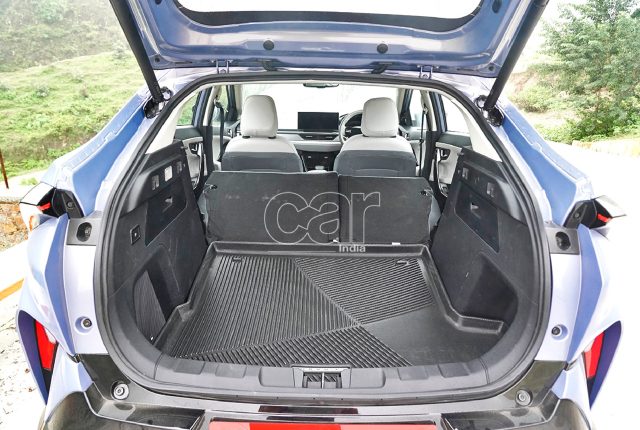
Another highlight for the Curvv.ev with its coupé-SUV body style comes with an easy-access boot via a powered tailgate. In its standard configuration, it offers 500 litres of boot volume, which can be expanded to 973 litres thanks to the 60:40 split-folding seats. Essentially the ideal setup for those planning a long-haul trip.
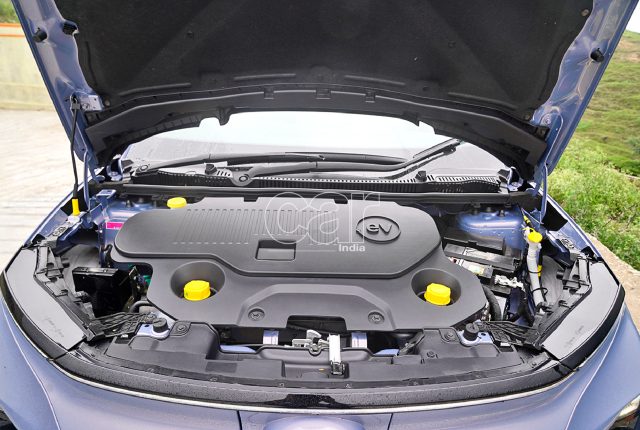
Under the skin, it’s the second Tata EV to be based on the Acti.ev platform. We’re driving the long range 55-kWh battery setup that makes 123 kW (167 hp) from its single front electric motor. This is the most powerful motor and the largest battery capacity on a Tata EV model to date. Straight from the off, I didn’t feel like it was something that weighs around 1,700 kg, in fact, it feels like something lighter. The electric motor feels linear yet engaging enough to egg the driver on to push to the limit. Despite it being 4.3 metres long, it felt planted with barely any body-roll, complemented by the nicely balanced steering response. The ride is impressive too, keeping things nicely stable although you will hear a fair bit of noise while tackling broken surfaces.
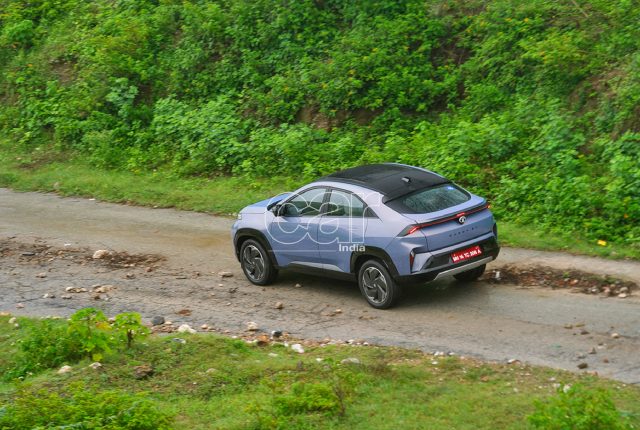
The Level 2 ADAS was impressive due to it feeling progressive rather than intrusive and only really intervened in serious scenarios; which was clear to see with the Lane Keeping Assist, Adaptive Steering Assist and Adaptive Cruise Control. Also, the blind-spot monitor having the option to be viewed on the digital driver’s display was much needed as the Nexon.ev’s setup that projected onto the infotainment system was a little distracting.
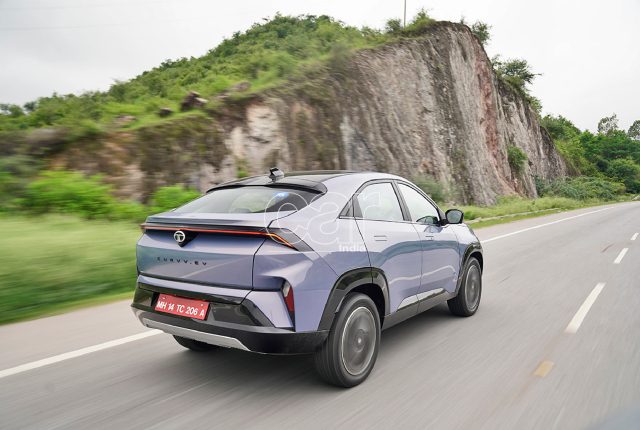
In terms of range, it gets an MIDC-claim of up to 585 km but it tends to not be really representative to real world conditions. I started with 412 km of range left on the odometer on a full charge and despite my limited time with it I managed to cover 130 km and still had 270 km left, using different driving modes and braking regen levels. Most importantly, range anxiety was almost non-existent, as doing 400 km at a stretch on a single charge is an impressively achievable goal. It also matches up with Tata’s own C75 testing cycle estimated range between 400 km and 425 km.
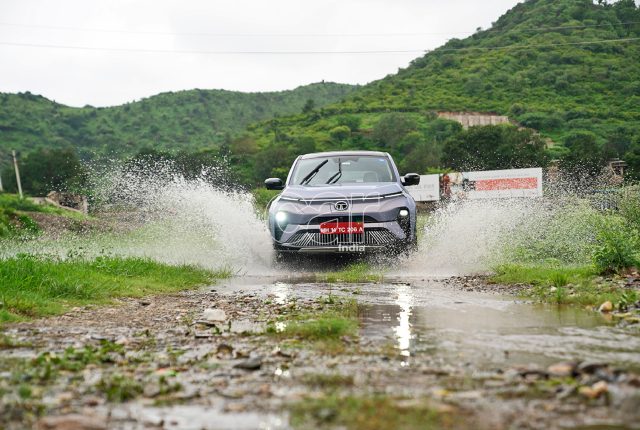
The EV is claimed to be capable of a 10-80 per cent charge in just 40 minutes through a 70-kW DC fast-charger. Also helping ease range anxiety is the updated iRA.ev connected app that now has a more centralised way of locating chargers and even plans a route to your ideal destination taking charging stations and range into account. Capping things off is the vehicle-to-load (V2L) and vehicle-to-vehicle (V2V) capabilities.
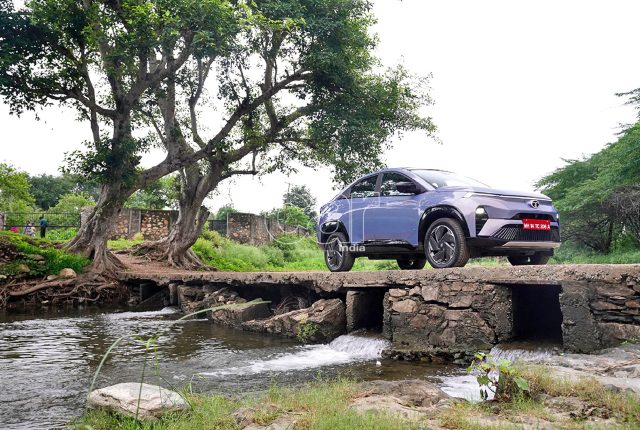
With prices starting at Rs 17.49 lakh, and the top-spec Empowered+ A variant we’re driving priced at Rs 21.99 lakh (all ex-showroom), the Tata Curvv.ev has a lot going for itself to really throw a curveball to the SUV segment as we know it. It’s a larger, more premium alternative to the Nexon.ev and stands out with its coupé SUV design, loads of tech, and leaves you smiling in performance and range. Yes, the rear seating experience could’ve been a bit better, but the Curvv.ev as an overall package can be considered as a serious alternative to the MG ZS EV.
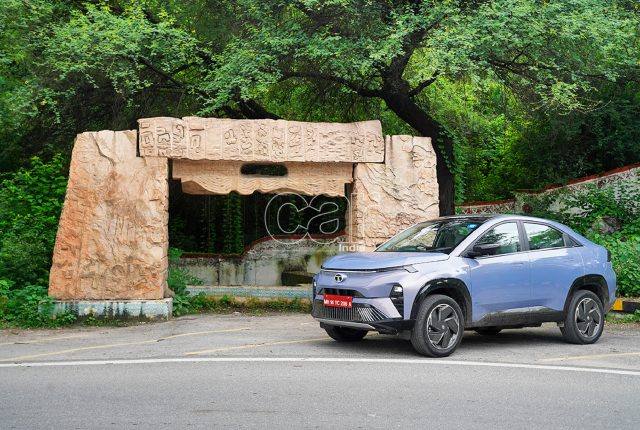
Moreover, it’ll be interesting to see how Tata Motors prices the ICE Curvv, which will go on sale on September 2. If they do it right, it could very well be a bold statement against the hotly competitive mid-size SUV segment.







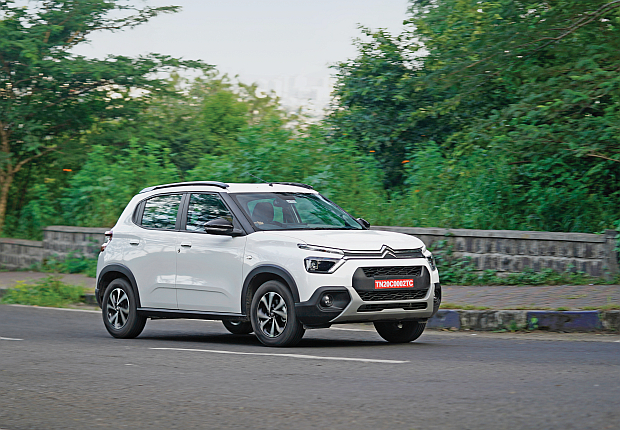



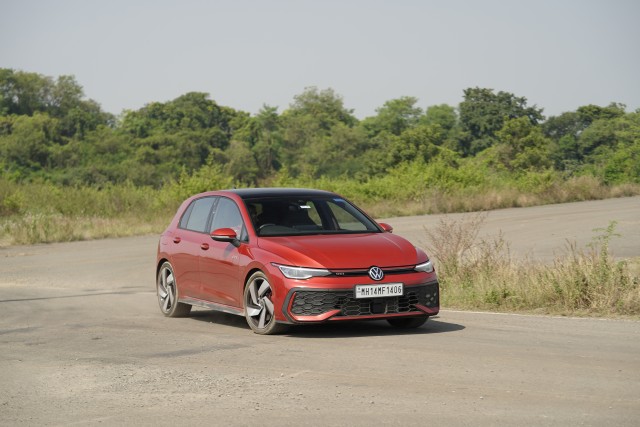


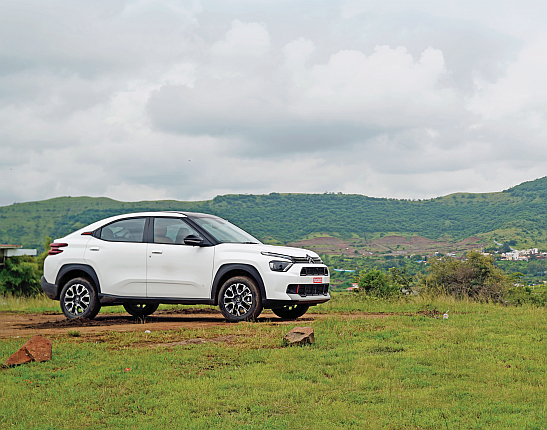
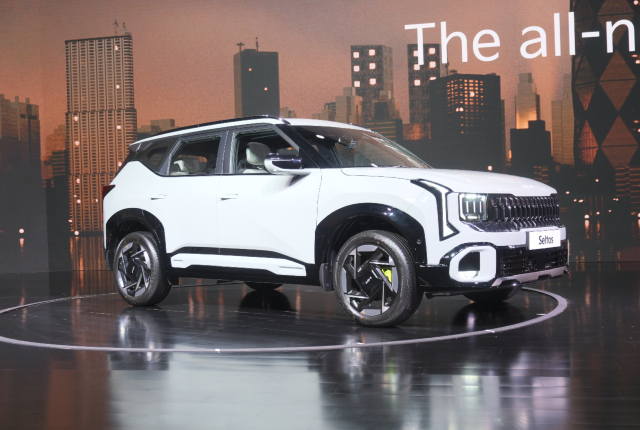
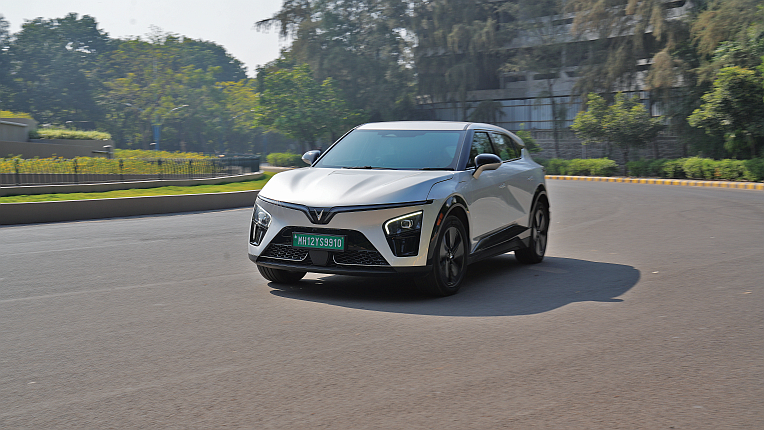


Leave a Reply